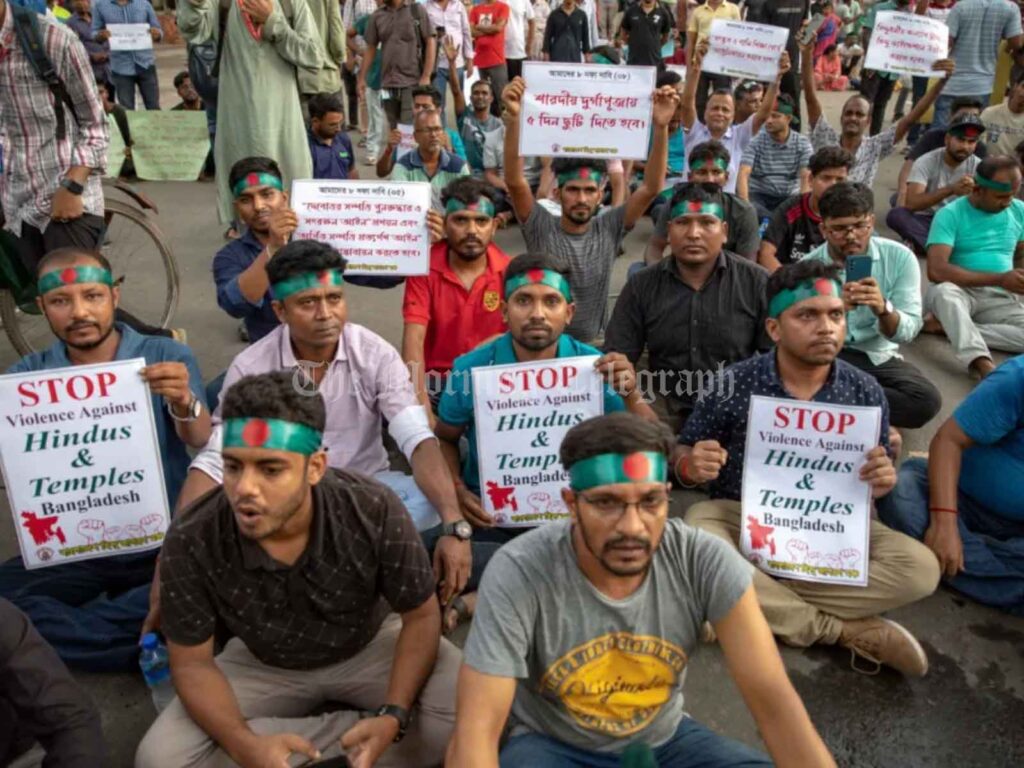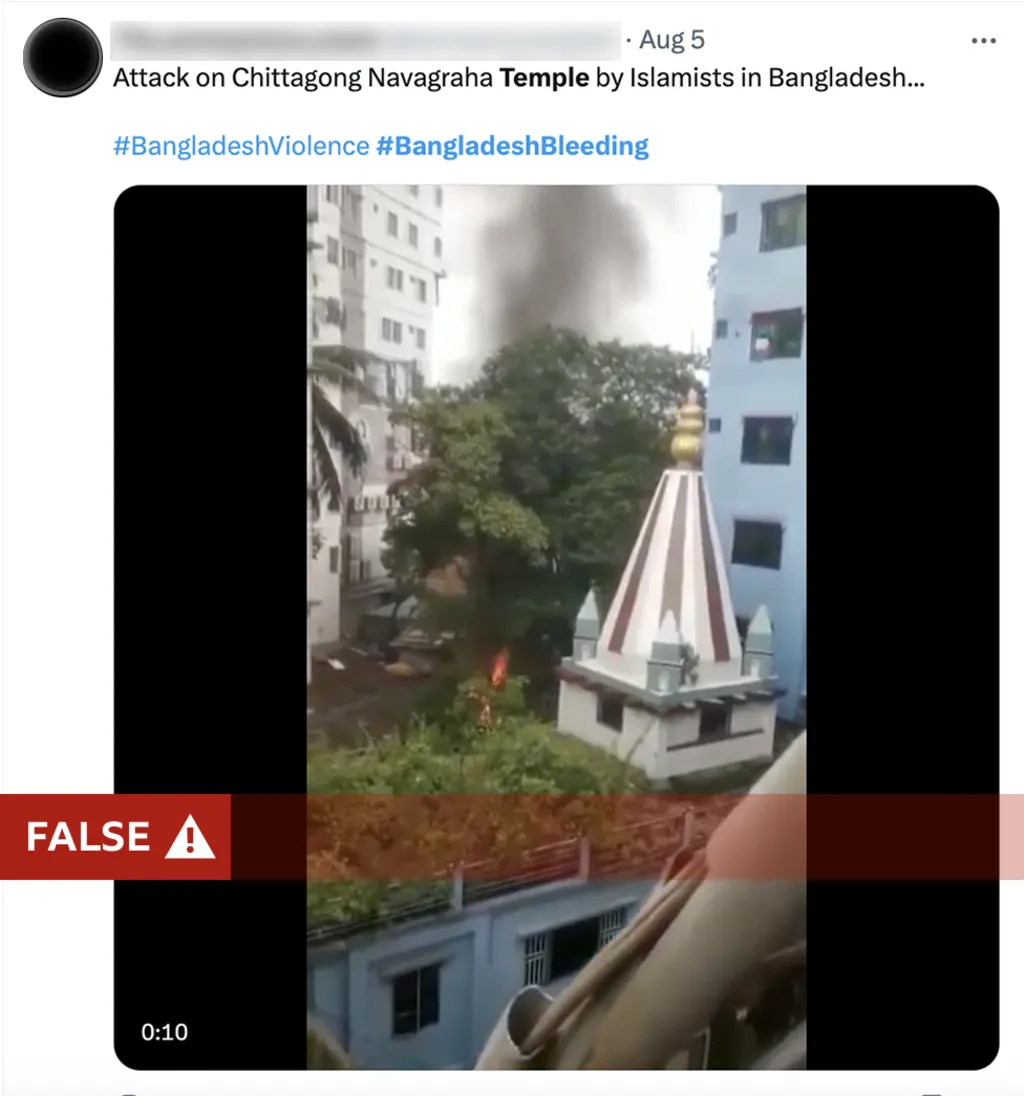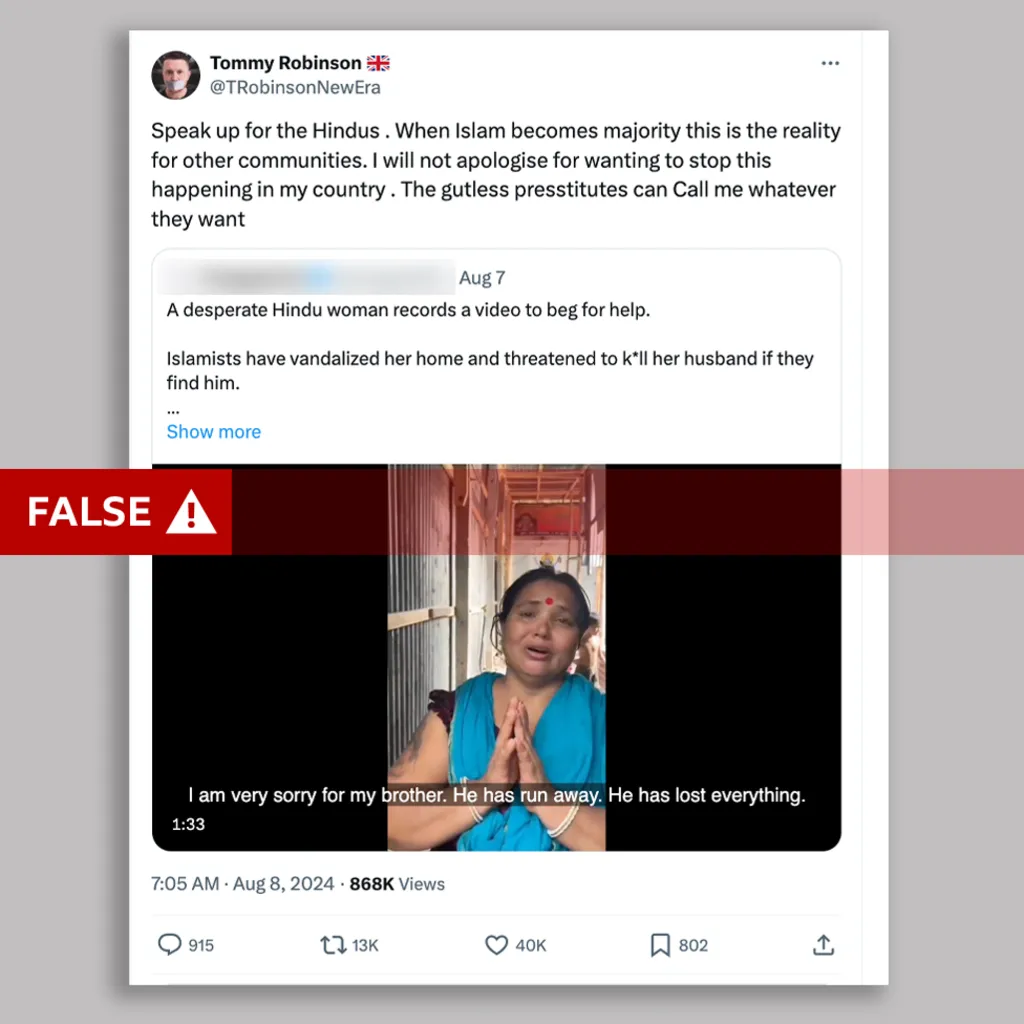
Far-Right Groups Spread False Claims of Hindu Genocide in Bangladesh Amid Political Turmoil
A wave of false information about attacks on Hindus in Bangladesh has spread across social media, fueled by far-right activists and influencers from neighboring India and beyond. These misleading narratives have exacerbated tensions in the country following the recent fall of Prime Minister Sheikh Hasina’s government.
Among the most prominent figures spreading these false claims is British far-right activist Stephen Yaxley-Lennon, better known as Tommy Robinson. Robinson, who has previously been criticized for his inflammatory posts during the UK riots, has shared unverified videos and posts online, falsely alleging that a “Hindu genocide” is underway in Bangladesh at the hands of “Islamist radicals.”
One viral video, claimed by some to show a Hindu temple in Chittagong being set on fire, was debunked. The footage, in fact, depicted a nearby office of the Awami League, the ruling party under Hasina, being attacked. The Navagraha Temple, which was falsely claimed to have been damaged, remained untouched, although the area around it is reportedly tense.

Bangladesh has been embroiled in turmoil since student-led protests against Hasina’s government led to her departure on August 5, 2024. The unrest, which left over 400 people dead, has spiraled into widespread violence, primarily targeting Awami League members, both Hindu and Muslim.
While there have been reports of attacks on Hindu-owned properties, these are believed to be politically rather than religiously motivated. Yet, far-right groups have twisted these incidents to fit a narrative of religious persecution. In one instance, a claim that a Hindu cricketer’s home had been burned down was debunked; the property actually belonged to a Muslim MP from the Awami League.

Tommy Robinson’s involvement has further internationalized the spread of misinformation. One of the videos he shared, showing a woman pleading for her husband’s life, was falsely attributed to an “Islamist” attack on Hindus. However, an investigation revealed that the dispute was related to a land ownership conflict, with the assailants comprising both Hindus and Muslims.

Experts like Professor Sayeed Al-Zaman, an authority on hate speech and disinformation in Bangladesh, have warned that these false narratives are inflaming tensions in an already volatile situation. “Fear-mongering by these influencers is only making the situation worse,” he said.
Some student protesters in Bangladesh, recognizing the danger of these false claims, have taken it upon themselves to protect Hindu temples from potential attacks. Moinul, a Muslim protester guarding a temple in Hatharazi, stated, “It’s our responsibility to protect them. Viral social media posts are trying to incite conflict between Hindus and Muslims, but we are not falling for it.”
Despite the unrest, there are signs of solidarity between communities. Choton Banik, a local Hindu resident, expressed hope for continued peaceful coexistence, saying, “I hope that we will continue to live together in this independent Bangladesh in the future.”
As the situation continues to evolve, the challenge remains to separate fact from fiction in a country where political and religious tensions are often closely intertwined. The spread of false claims by far-right groups underscores the need for careful scrutiny of online content, particularly in times of crisis.




